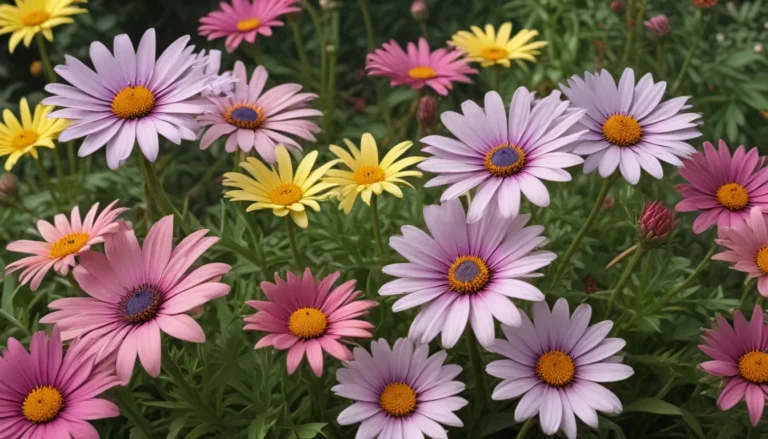Discover the Unique World of Passionflowers: A Comprehensive Guide

Passionflowers, belonging to the Passiflora genus, are undeniably some of the most captivating plants you can add to your garden. With their flamboyant blooms, intricate structures, and fascinating history, these vines offer both visual appeal and utility as edible fruits.
In this detailed guide, you will learn everything you need to know about growing and caring for passionflowers. From their origins to cultivation techniques, varieties to select, pest management, harvesting fruits, preserving, and culinary use, we’ve got you covered. Let’s dive in and explore the diverse world of passionflowers together!
Unveiling the Beauty of Passionflowers
Passionflowers are semi-herbaceous fruiting vines native to Latin America, with some varieties naturalized across the globe. These plants thrive in regions with temperatures above 32°F and offer a stunning display of blooms from spring to late fall. From pale lavender to flame orange, the color variations in their flowers are mesmerizing.
Moreover, the allure of passionflowers extends beyond their visual appeal. They are deeply intertwined with various cultures, with historical ties to Roman Catholicism and traditional medicinal uses among native tribes. Whether for ornamental purposes or their edible fruits, passionflowers are truly a multifaceted addition to any garden.
Propagating Passionflowers: Methods and Techniques
Passionflowers can be propagated through multiple methods, including seeds, cuttings, and transplanting seedlings. Each technique has its own set of requirements and benefits that cater to different preferences and circumstances.
- From Seed: Harvest ripe seeds, scarify them, and plant in well-draining soil.
- From Cuttings: Select healthy stems, treat with rooting hormone, and provide a moist environment for rooting.
- From Seedlings and Transplanting: Transfer seedlings to the ground carefully to avoid damaging the sensitive roots.
By understanding the nuances of each propagation method, you can successfully cultivate a thriving passionflower vine in your garden.
Cultivating Passionflower Plants: Tips for Success
To ensure the healthy growth of passionflower plants, it’s essential to create the right conditions and provide proper care. Here are some expert tips to help you cultivate vibrant passionflower vines:
- Plant in full sun: Ensure that your vine receives adequate sunlight for optimal growth.
- Prune to manage growth: Regular pruning can promote blooming and enhance fruit production.
- Fertilize as needed: Use a balanced fertilizer to support healthy growth without excessive foliage.
- Protect from cold temperatures: Shield your plants from frost and cold snaps to prevent damage.
- Provide structural support: Passionflowers are climbers and require sturdy trellises or fences for support.
By following these tips, you can create an ideal environment for your passionflowers to thrive and flourish.
Exploring Passionflower Varieties: From Purple to Yellow
Passionflowers come in a diverse range of species and cultivars, each with its unique characteristics and attributes. Whether you’re drawn to the purple hues of P. incarnata or the vibrant red blossoms of P. coccinea, there’s a variety to suit every gardener’s preferences.
- P. incarnata: Known for its purple blooms and sweet, musky fruit.
- P. flavicarpa: Produces high yields of sweet, yellow fruits with a dark purple corona.
- P. caerulea: Hardy blue passionflower variety with fragrant white flowers and deep orange fruits.
- P. coccinea: Showy red variety with bright scarlet flowers and edible, yellow fruits.
- P. mooreana: Perfect for container gardening, featuring fragrant blue or white flowers and compact growth.
By selecting the right passionflower variety for your garden, you can enjoy both visual beauty and delicious fruits throughout the growing season.
Defending Against Pests and Diseases: A Comprehensive Guide
Passionflower plants are relatively resilient, thanks to their natural defenses against insect pests. However, they are still susceptible to diseases and herbivores that can affect their health and productivity.
- Herbivores: Deer and rabbits may pose a threat to passionflower plants if left unchecked.
- Insects: Aphids and caterpillars can cause damage to foliage and blooms, requiring proactive pest management.
- Disease: Viral and fungal diseases like mosaic virus can impact plant growth, necessitating proper care and prevention strategies.
By implementing integrated pest management practices and monitoring your plants regularly, you can safeguard your passionflowers against harmful pests and diseases.
Harvesting and Preserving Passion Fruits: From Vine to Table
As the growing season progresses, passionflowers undergo a remarkable transformation from blooms to fruits. Harvesting ripe fruits and preparing them for culinary use involves careful selection, handling, and preservation methods.
- Harvesting: Wait for fruits to ripen fully before picking, ensuring maximum flavor and sweetness.
- Preserving: Extract the pulp, discard the rind, and store or process the fruit for immediate use or long-term preservation.
- Culinary Use: Incorporate passionfruit pulp into recipes, drinks, or desserts for a burst of exotic flavor.
By mastering the art of harvesting and preserving passion fruits, you can savor the unique taste and versatility of these delicious and nutritious treats.
Conclusion: Embracing the Beauty and Bounty of Passionflowers
In conclusion, passionflowers are more than just ornamental vines; they are versatile plants that offer a myriad of benefits to gardeners. Whether you cultivate them for their stunning blooms, unique fruits, or historical significance, passionflowers are a captivating addition to any garden landscape.
By following the guidelines outlined in this comprehensive guide, you can unlock the full potential of passionflowers and create a vibrant, thriving garden filled with beauty and bounty. So, why not embark on a botanical adventure with passionflowers and experience the joy of growing these extraordinary plants firsthand?
Remember, each passionflower vine has its unique story to tell, from its historical origins to its culinary delights. So, go ahead, plant a passionflower, and let nature’s wonders unfold before your eyes!
If you’re eager to explore more flowering vines for your garden, check out our recommended articles for additional inspiration and insights. Happy gardening, and may your passionflower journey be filled with beauty, abundance, and delight!





